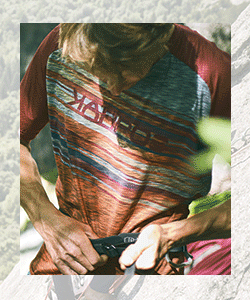Bunions : climbers, stop forcing your toe into tiny shoes !

Bunions are something that can be corrected with a little mobility work and attention to use patterns. The joint at the base of the big toe, called the metatarsophalangeal or MTP joint, is a hinge that allows weight transfer during walking and climbing. With bunions, we see two symptoms (or complaints) which lead us to understand the mechanisms occurring within the foot.
Bunions have two important visual aspects
1 The big toe deviates towards the other toes.
2 The joint of the big toe is swollen with an additional deformity or bump on the aspect that is most medial (away from the other toes).
Probing more deeply into why these symptoms exist, we notice upon examination, that the big toe does not just deviate towards the other toes. But it is held there by tight musculature between the toes in most cases. Additionally, the space between the big toe and the second has lessened. And there might be rubbing. Or irritation that has occurred as a result.
Because of this, the big toe is no longer functioning as a hinge joint. But instead, a ball-and-socket joint. This is why we see the second aspect of the big bump beginning to form on the inside of the big toe. This ‘bump’ is merely the swelling and inflammation that collects from the joint being stretched and bent in a way that clashes with its design.

Bunions and climbing
With the climber who forces their toe into tiny shoes, the joint can be accidentally trained to fold towards the other toes. And over time, the joint stiffens and the motion is lost, forcing it into a damaging pattern.
Acquired from tight hips, musculature behind the same knee being contracted. Or the athlete just pointing the foot outward as a way of moving, the buildup of wear and tear within the joint accumulates into what we call a Bunion.
The care is to unweight the joint. And restore normal biomechanics. And to undo the contracture and tightness of the muscles and the joints capsule itself. Which is merely akin to a plastic bag that holds together the ends of the bones, and the fluid and structures between them.
Self-Care and Assisted Care Ideas
–Stretching the big toe in opposition of the little toes.
-Compression taping for swelling control and toe motion normality.
–Acupuncture/muscle aid to the muscles between the first and second toe to decrease the forces into the affected joint.
-Re-patterning and strenghtening drills (proprioception/balance) to retrain the athlete how to hold the joint (and the joints above it) in neutral.
-Just because you have a bunion does not mean that you need surgery. Many options exist for prevention and conservative care besides fusing or putting a rod into the joint. With this said, there have been studies that show that the abdominal core is not as easily recruited with a rigid or fused toe region.











No Responses
[…] Bunions : climbers, stop forcing your toe into tiny shoes ! […]
[…] Bunions : climbers, stop forcing your toe into tiny shoes ! […]